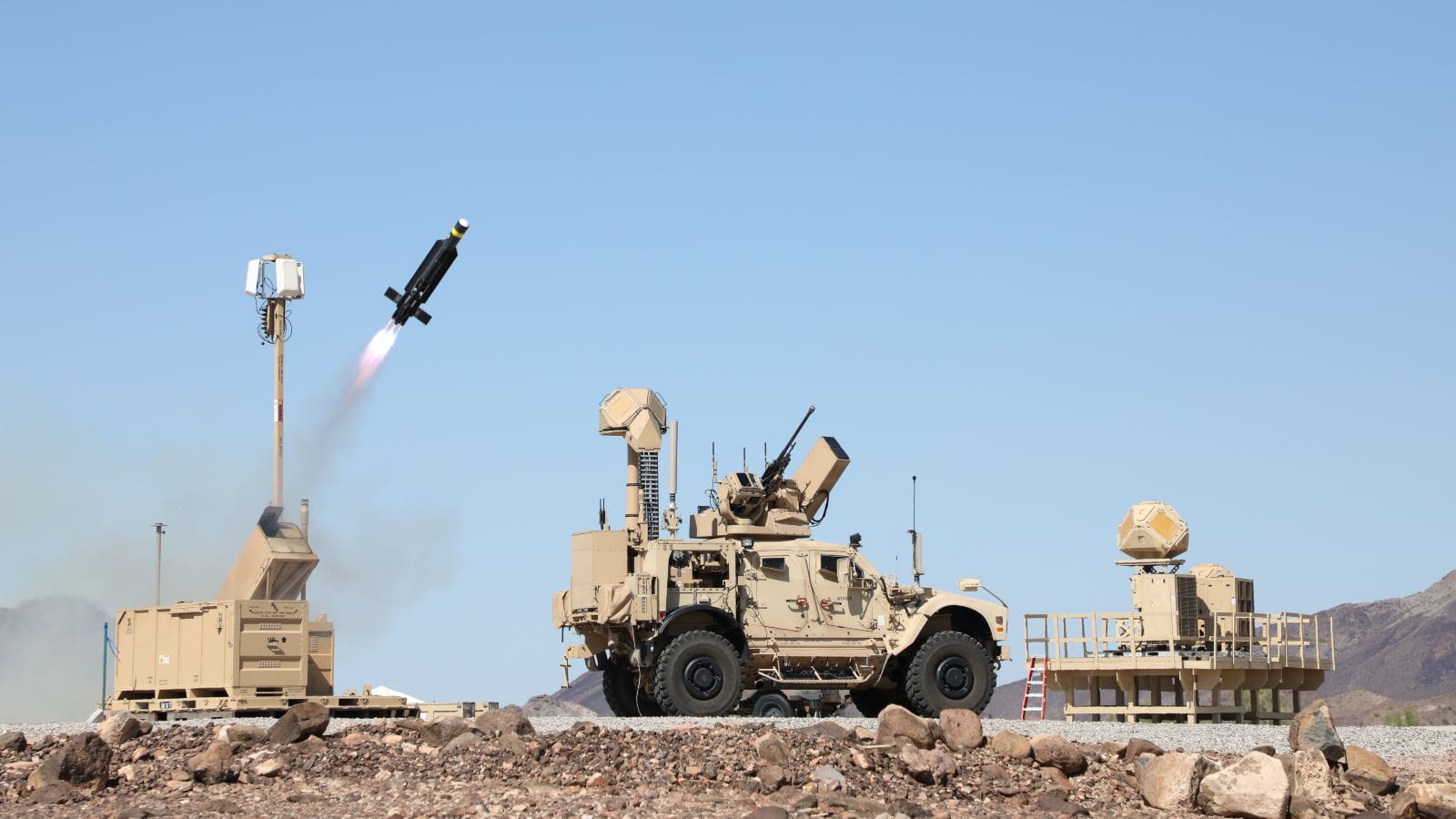The KuRFS radar and Coyote® effector deliver essential detect and defeat capabilities in the defense against unmanned aircraft systems, or UAS, also known as drones. That’s why these proven Raytheon capabilities are crucial components of the U.S. Army’s integrated counter-UAS solution. It’s called LIDS: the Low, slow, small, unmanned aircraft Integrated Defeat System. In October 2022, Raytheon was awarded a contract to initially equip two Army divisions with its Ku-band Radio Frequency Sensor for 360-degree threat detection and Coyote® for low-cost, highly effective UAS defeat. In 2023, an additional quantity of fixed site and mobile LIDS systems was awarded to further support the Army’s Central Command operations. A third contract followed, intended to equip a third Army division. In LIDS, the Army integrates Raytheon’s KuRFS and Coyote with Northrop Grumman’s Forward Area Air Defense Command and Control system, or FAADC2, and the electronic warfare system made by Syracuse Research Corporation for the integrated LIDS counter-UAS solution. LIDS is deployable as either mobile or fixed, relocatable platforms. The system can provide both stationary support for an installation, asset or site, and a transportable configuration for deployment flexibility.
“It takes a system of systems approach … to counter the growing threat from unmanned systems. there’s not just one system that’s going to solve this problem – from small quadcopters all the way up to almost cruise missile-type attack systems that you see out there. So, to defeat this range of Group 1-3 UAS. It takes a layered approach … it’s a solvable problem,” said Maj. Gen. Sean Gainey, then director of the Army’s Joint Counter-small Unmanned Aircraft Systems Office at the Association of the U.S. Army’s Annual Meeting and Exposition in October 2022.
“There are other kinds of counter-UAS configurations, but LIDS is the most robust in everything from detect, track, identify and defeat. That’s the advantage Coyote and KuRFS bring to the LIDS configuration,” he added. “It’s been rigorously tested, deployed in theater and getting the job done. During my time in Iraq, we had a significant number of false warns that had bad, unintended consequences for our mission. Now, the accuracy of the KuRFS radar and its ability to discriminate between real threats and clutter or biological objects gives us a huge advantage over what we had in the past,” said Bill Darnè, Raytheon’s Requirements and Capabilities director for counter-UAS capabilities.

<
ul>Advantages KuRFS and Coyote bring to the U.S. Army’s LIDS
KuRFS
- Multi-mission KuRFS is so accurate, it can detect a 9mm bullet, and it has few false alarms or dropped tracks.
- The radar offers flexibility of fixed relocatable (KuRFS) and mobile (Ku720) deployment options.
- Precision targeting KuRFS discriminates between actual targets and clutter.
- Coyote
- Coyote is able to down drones at longer ranges and higher altitudes than other systems.
- Coyote Block 2 kinetic effectors defeat single drones and swarms of varied size and maneuverability.
- The Coyote effectors are affordable; therefore, cost-effective to counter UAS threats.
These capabilities now address a critical gap, building on the milestones achieved in previous, annual tests, Raytheon’s Counter-UAS team members again gathered alongside Army personnel at the Yuma Proving Ground in Arizona for their summer 2023 test. Again, the results were outstanding:
KuRFS excelled in a stress test successfully detecting and tracking a complex swarm of more than 30 unmanned aircraft vehicles.
Coyote defeated several targets, singles and swarms, demonstrating reduced engagement timelines to defeat multiple threats.
The tests validated the recent hardware and software enhancements made to both systems, to optimize capability and performance. The consistently successful performance of Coyote and KuRFS during these tests proves that LIDS gives warfighters around the globe a competitive advantage. The U.S. State Department recently approved a potential sale of the counter-UAS system with KuRFS and Coyote to Qatar. Meanwhile, the Army is expected to conduct its next record test in Arizona later this year – yet another opportunity to demonstrate LIDS’ exceptional capabilities and performance. LIDS is an operationally deployed system today, KuRFS and Coyote are out there – defending soldiers, bases and assets from enemy drones.















